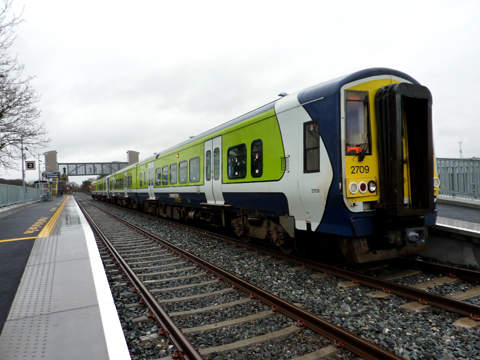The Western Railway Corridor (WRC), also known as Conair Iarnróid an Iarthair, is the name given to an abandoned railway network in Ireland. Following widespread campaigns to restart services on the network, the Irish Government decided to undertake the renewal of the WRC.
The project will serve approximately 355,509 (2006) people in the western region of Ireland. Iarnród Éireann or Irish Rail is delivering the project, which is divided into four phases.
Phase I of the project, which includes the 58km Ennis to Athenry section, was opened in March 2010 after a gap of 30 years and cost €106.5m.
The section will serve Limerick, Ennis, Athenry and Galway in the west. The journey time between Limerick and Galway is expected to be around two hours.
Approximately 300,000 passengers are estimated to use the reopened rail section every year. Irish Rail is planning to run intercity services between Limerick and Dublin, and between Galway and Dublin.
Phase II of the project includes the 25km section from Athenry to Tuam, phase III involves the 27km section from Tuam to Claremorris, while phase IV comprises the 74km Collooney to Claremorris section. Phase II is expected to be completed by 2011. Phase III has been approved and construction will start in mid 2010. Phase IV of the project is still in planning stages.
The debate on whether all the sections of the WRC need to be opened is divided. Campaigners in favour of the project feel that reopening the network will help to develop the region, and also anticipate that passenger numbers will be large enough to support the operational costs of the project.
Critics, however, feel that reopening the remaining sections will not be feasible due to the scattered population in the region.
Western Rail Corridor project
The renewal of the WRC was taken up by the Irish Government under its Transport 21 investment programme, which was created to improve infrastructure in the region. The programme is part of the Irish Government’s National Development Plan 2007-2013. As part of the plan, an expert working group was set up in 2005 to prepare a report on the feasibility of reopening the disused railway network.
Despite mixed opinions about the project, the Irish Government launched preliminary works for the Ennis to Athenry section in 2006. Renewal works on the tracks of the section started in 2007 and by 2009, the laying of the new track commenced. The section was originally scheduled to be opened in 2009 but was delayed due to flooding in the Kiltartan area.
Ennis to Athenry section infrastructure
Work on the Ennis to Athenry section included the construction of new stations, with four being completed at Sixmilebridge, Gort, Ardrahan and Craughwell.
By 2011, a new station is scheduled to open at Oranmore and another in Crusheen. The stations feature a 90m platform, a shelter, customer information systems, CCTV and car parking. The stations are also accessible to the mobility impaired.
Other works included in the project were the laying of new tracks along the entire length of the section. In addition, fences and bridges along the route were renovated and signalling systems were modernised. Some existing level crossings were repaired and others were removed.
Rail network rolling stock
The rolling stock for the railway network was supplied by Alstom. The order was for 25 units to form 12 two car sets and one spare, consisting of 2,700 class railcars in two-car or four-car configuration.
The trains each weigh 38.2t and can run at a maximum speed of 120km/h. The total passenger capacity of the trains is 117 seated per two-car unit and an additional 274 standing. Traction is diesel hydraulic from a Cummins 350hp engine.












